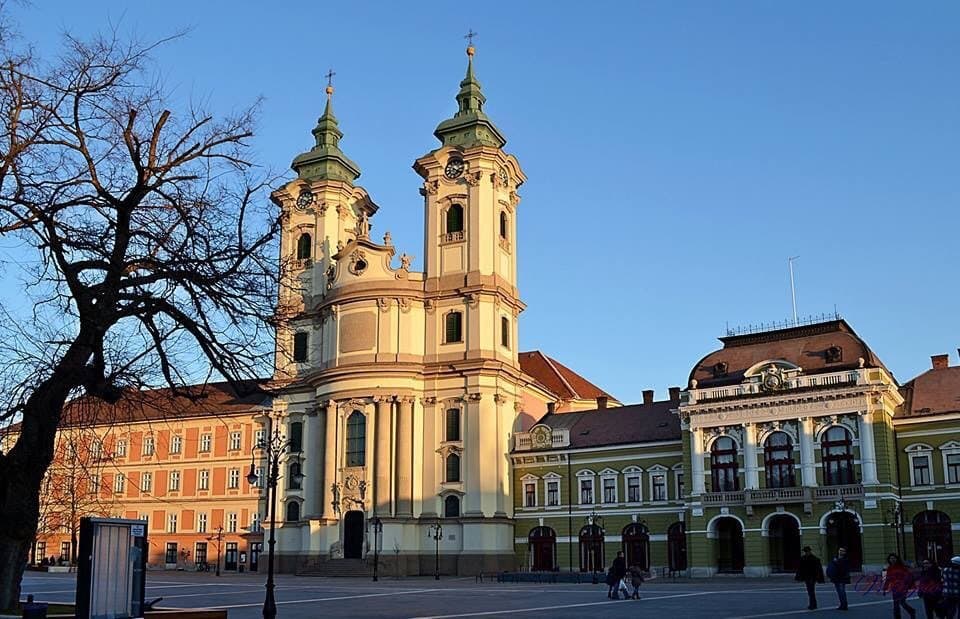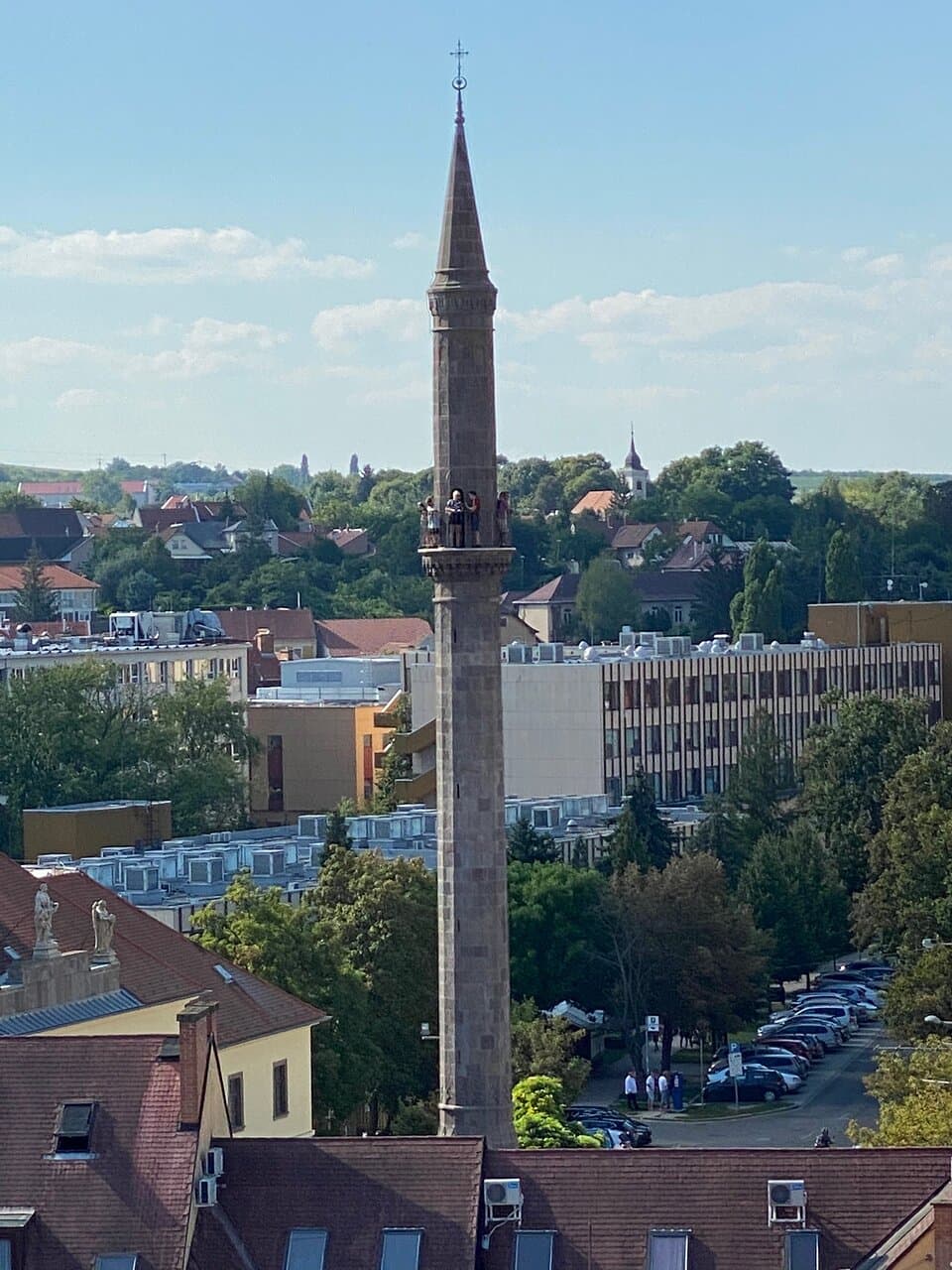
Serbian Orthodox Church Eger
A hidden gem in Eger, this Serbian Orthodox Church boasts a stunning Baroque Copf interior and a magnificent iconostasis.
Highlights
Must-see attractions

Social
From TikTok & Reddit
Best Time
To best appreciate the icons

Serbian Orthodox Church Eger
Best Time
To best appreciate the icons
Highlights
Must-see attractions
A hidden gem in Eger, this Serbian Orthodox Church boasts a stunning Baroque Copf interior and a magnificent iconostasis.
"The most beautiful Serbian Orthodox church I've seen at home, always an impressive sight! "

Check Opening Hours
If the church is closed, ask at the house nearby (entry from church garden). :door:
Symbolic Entry Fee
A small fee (around 500 HUF) helps with restoration. Worth it for the interior! :ticket:

Highlights
Discover the most iconic attractions and experiences
Iconostasis
Sanctuary
A breathtaking wall of icons depicting saints and biblical scenes, a true masterpiece of carved, baroque-style art.

Baroque Copf Architecture
Exterior and Interior
Admire the unique late Baroque style, characterized by clear lines, simplicity, and light.
Church History Exhibition
Inside the church
A mini-museum detailing the history of this significant pilgrimage site and its community.
Plans like a pro.
Thinks like you
Planning Your Visit
Timing Your Visit
Understanding the Significance
Best Times
Insider Tips
from TikTok, Instagram & Reddit
Check Opening Hours
If the church is closed, ask at the house nearby (entry from church garden). :door:
Symbolic Entry Fee
A small fee (around 500 HUF) helps with restoration. Worth it for the interior! :ticket:
Impressive Icons
The iconostasis is a must-see, a rare treasure of Serbian Orthodox art. :star:
Historical Context
Learn about the Serbian and Greek communities who settled here centuries ago. :scroll:
Tips
from all over the internet
Check Opening Hours
If the church is closed, ask at the house nearby (entry from church garden). :door:
Symbolic Entry Fee
A small fee (around 500 HUF) helps with restoration. Worth it for the interior! :ticket:
Impressive Icons
The iconostasis is a must-see, a rare treasure of Serbian Orthodox art. :star:
Historical Context
Learn about the Serbian and Greek communities who settled here centuries ago. :scroll:
Scenic Cemetery Views
The cemetery offers a wonderful view of the city. :camerawithflash:
What Travellers Say
Reviews Summary
Visitors often describe the Serbian Orthodox Church Eger as a hidden gem with an incredibly impressive interior, particularly its ornate iconostasis. While the exterior may show signs of age, the artistic and historical value within is consistently praised. Some note a lack of English information, but the symbolic entry fee is considered well worth the experience.
"Don´t miss this church: if it is closed ask in the house nearby (entry from church garden) ..
Or here: Széchenyi István utca 55., phone (36) 412 023"
Luppo Lui
"Amazing icons🥰This is the most beautiful Serbian Orthodox church I've seen at home🥰Always an impressive sight🥰I recommend it to everyone who loves these kinds of rare treasures😊"
Györgyné Benedikt
"We happened upon this place by chance.
Very interesting to see.
Impressive interior.
DIY museum vibes.
Unfortunately, there's hardly any information in English."
Mike
What People Like
What People Dislike
Frequently Asked Questions
🚇 🗺️ Getting There
The church is located on a hill in the northern part of Eger, a bit far from the main market square. While public transport details aren't widely shared, it's accessible by car or a walk. Consider using a local map app for precise directions. :car:
It's situated on a hill, so it's visible from certain vantage points. However, some visitors note that information in English can be scarce, so having a map or GPS is helpful. :round_pushpin:
🎫 🎫 Tickets & Entry
Yes, there is a small, symbolic entry fee, reportedly around 500 HUF, which contributes to the building's restoration. It's considered well worth the cost to see the interior. :ticket:
Specific opening hours are not always readily available. If the church appears closed, visitors are advised to inquire at a nearby residence, as entry can sometimes be arranged. :clock:
Yes, a modest fee is charged for entry, which is seen as a contribution towards the upkeep and restoration of this historic site. :moneybag:
🎫 ⛪ Onsite Experience
The absolute highlight is the magnificent iconostasis, a richly decorated wall of icons that separates the sanctuary from the nave. It's described as a rare treasure and a must-see. :star:
The church is built in the Copf style, a form of late Baroque architecture known for its clearer, more transparent lines, simplicity, and emphasis on light. :building_construction:
Unfortunately, many visitors report that there is very little information available in English, making it challenging to fully understand the history and significance without prior research. :books:
Inside, you can also find a richly carved pulpit in the Copf style and a mini-exhibition detailing the history of the pilgrimage site. :museum:
Yes, the interior design includes a separate section for women, often referred to as the 'women's gallery,' on the left side of the male section. :woman_artist:
📸 📸 Photography
While not explicitly stated, it's generally advisable to be respectful of the sacred space. Some visitors have shared photos, suggesting it's permitted, but always be mindful of any posted signs or requests from church officials. :camerawithflash:
The iconostasis is undoubtedly the most photogenic element. The exterior architecture and the views from the surrounding cemetery also offer great photographic opportunities. :camera:
For Different Travelers
Tailored advice for your travel style
👨👩👧 Families with Kids
🏛️ History Buffs
🎨 Art & Architecture Admirers
Deep Dives
In-depth insights and expert knowledge
The Historical Significance of Serbs in Eger
Initially, these communities utilized the existing medieval church of the Augustinian Order on the same site. However, as the Serbian and Greek populations, largely involved in the prosperous wine trade, grew and their original church deteriorated, they petitioned for a new one. King Joseph II eventually granted them permission to build, leading to the construction of the church that stands today.
The church, built between 1785 and 1799 based on the plans of János Povolni, is a prime example of the Copf style. This architectural style, a derivative of late Baroque, is characterized by its simpler, more transparent lines and a focus on light and clarity, preceding the era of classicism. The church's construction and its magnificent iconostasis reflect the wealth and devotion of the Serbian and Greek communities who established a lasting presence in Eger.
The Artistry of the Iconostasis
The iconostasis in Eger was carved by Miklós Jankovics starting in 1789. It features a vast surface adorned with sixty panel paintings, created by the Viennese painter Anton Kuchelmeiser. These icons meticulously follow Orthodox regulations, depicting the lives of Jesus and Mary, as well as various apostles, saints, and prophets. The sheer scale and detail of these icons make it a significant work of religious art and a primary reason for visiting the church.
Visitors consistently rave about the beauty and impressiveness of the iconostasis, describing it as a 'rare treasure' and an 'amazing' sight. It's considered a quintessential experience for anyone interested in Orthodox art and religious heritage.
Architectural Style: Copf
This architectural approach is evident in both the exterior and interior of the church. While the exterior might show signs of age and neglect, the interior, particularly the iconostasis and pulpit, showcases the Copf style's elegance and refined detailing. The richly carved pulpit, for instance, exemplifies the style's aesthetic.
Understanding the Copf style helps appreciate the church's unique character. It represents a distinct phase in architectural history, offering a visual contrast to more ornate Baroque or strictly classical designs.




Social
from TikTok, Instagram & Reddit